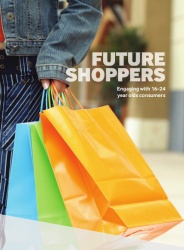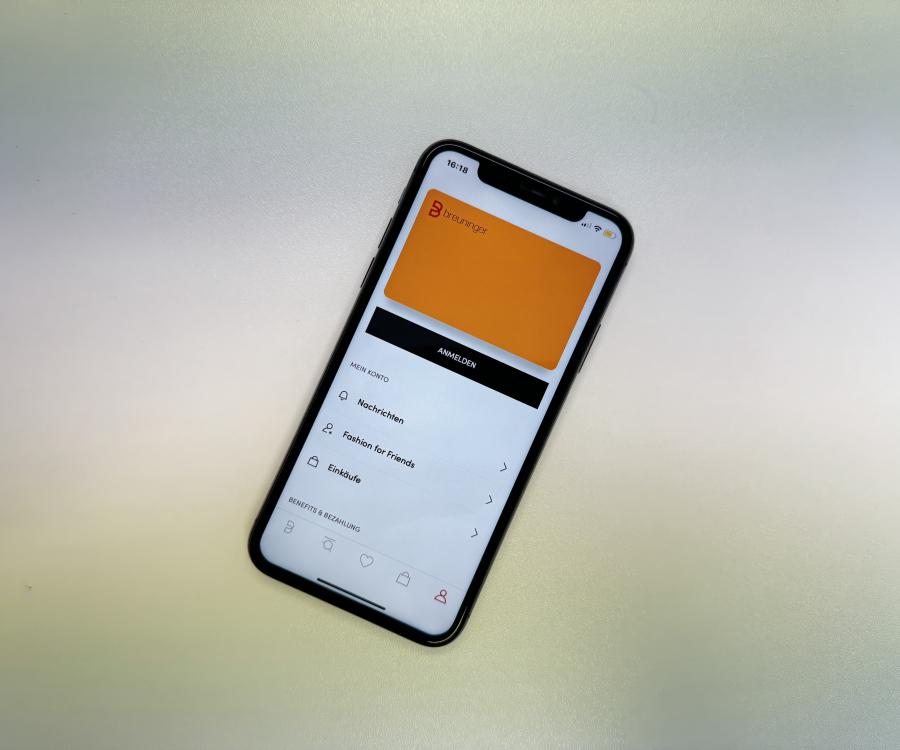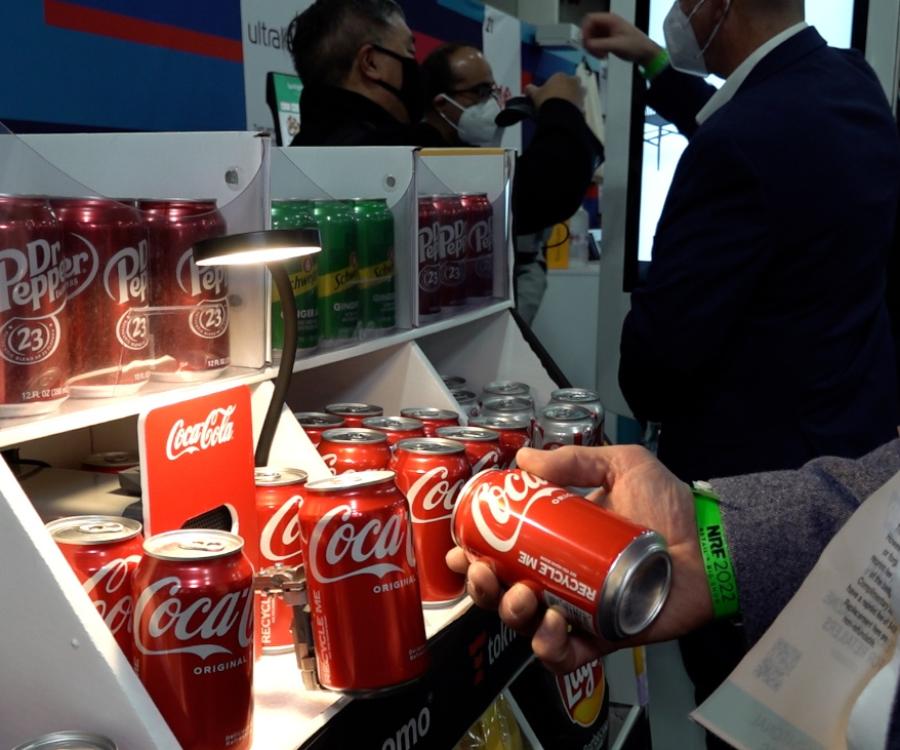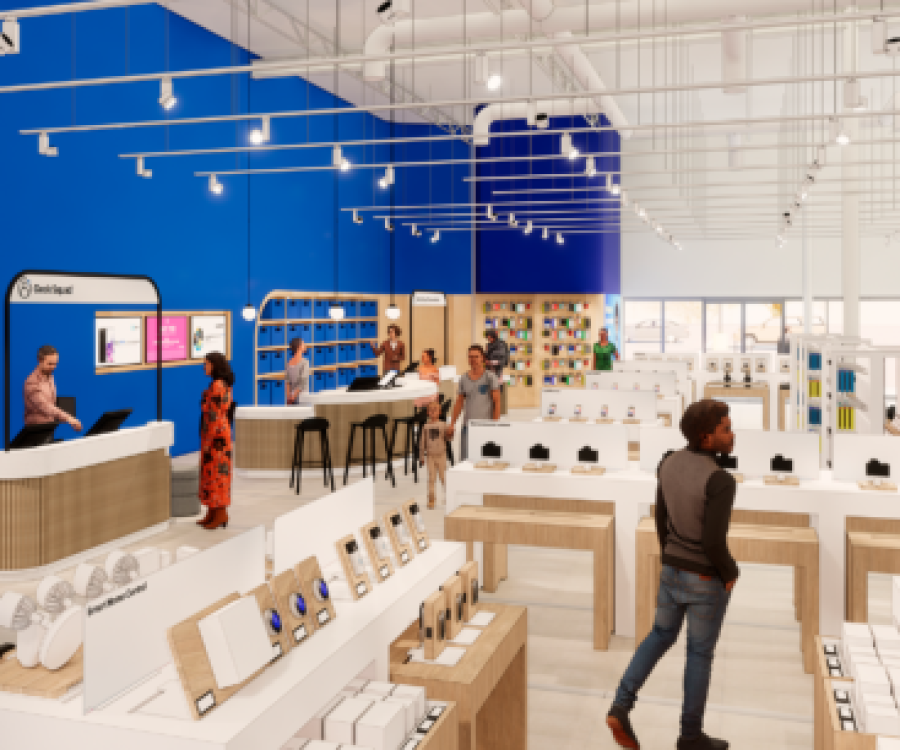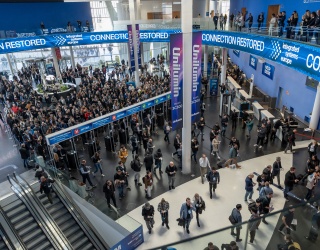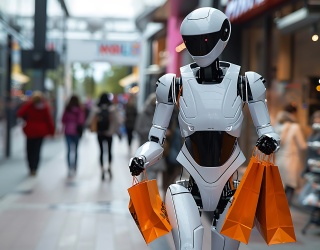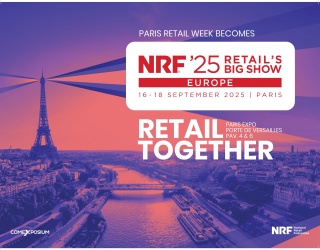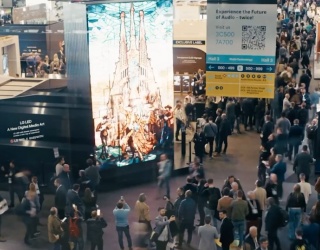Britain’s retail industry is in a state of flux. A sector that has stood unchanged for decades now finds itself subject to one of the swiftest transformations ever seen. Mobile - and other connected technologies - are fundamentally redefining the retail landscape, ripping up rulebooks and revolutionising the way we buy from and engage with retail brands.
As this happens, a new generation of shoppers is emerging, the first to be raised in this internet-centric era. While today’s young adults may not yet boast the purchasing power of their elders, they are unique in being the first generation to grow up in a world in which eCommerce - and all of its associated benefits - is the norm. They are, in every way, digital natives. Retailers have much to gain from understanding these future shoppers.
By learning about what drives them now, we can begin to predict not only how they will behave in the future but also how to be ready to engage them when we get there, too. This report aims to do just that – provide insight about the attitudes of one of the high street’s biggest target demographics, which can then inform strategic decision-making by the retailers who serve them. To gain that understanding, we surveyed 1,000 16 – 24 year-olds from across the UK on a range of issues relating to their shopping habits both now and in the future. Their responses, compiled here, provide a definitive view on today’s young adults as they start on the road to becoming the UK’s Future Shoppers.
Engaging with 16 to 24 year old consumers
16-24 may be a well-recognised demographic, but it also serves as one of the defining periods in any person’s life. As a result, the actual span of that demographic is gigantic, those eight years taking a person from their fi nal days at school into an unknown future. That has a range of implications for their relationship with retail. After all, it’s during this time that they will begin to gain true fi nancial independence. While they may have been infl uencing the purchase decisions of their parents or guardians for years before, it’s now that those decisions begin to become their own.
Still learning, but forging a path towards fi nancial independence Before we investigate the specifi cs of their fi nances, it’s worth spending a moment on the circumstances of our audience. As might be expected, many of them are in full-time education, with almost three-quarters of those interviewed noting that they are currently students. Perhaps more tellingly, over 30% balance their studies with either part- or full-time employment. Just 6% are unemployed, with the remainder working either part-or full-time. With almost half of the sample either unemployed or engaged solely in full-time education, it might be easy to assume that this limits their spending potential, particularly when it comes to disposable income. But to do so would be a mistake; overall, we see a broad spread of liquidity.
While 44% have just £100 or less per month to spend on themselves, after all living costs have been deducted, around a third say that they have a monthly allowance of between £100 and £300 for luxury items. A particularly affluent 11% say they have as much as £300 to £500 to spend each month, while 6% exceed even the uppermost limits of that bracket, spending more than £500 on luxury goods on a monthly basis. As could be expected from Gen Y, the primary outlet for the majority of 16-24s is online. 40% say that they tend to buy more over the internet than the high street in an average month.
That’s not to say that bricks and mortar stores don’t have their place - they still remain preferable for 26%, and the remaining 34% say that their retail activity tends to be split evenly between the two channels. Figure 2: How do you tend to shop? Online On the high street/in-stores Even split between the two Perhaps more telling is the popularity of mCommerce. While laptops are the most common device used to make an online purchase (74%), mobiles are a clear second, chosen by nearly half of those surveyed as a frequent purchasing tool.
This beats purchasing via desktop computers and even tablets (both at 31%). Future Shoppers Figure 3: When you shop online, what device do you use? Laptop computer Mobile phone Desktop computer Tablet computer Phablet While online might be the dominant channel for many younger shoppers, high street stores still entice them in, and many on a daily basis. 71% of 16-24s say that they’ll drop into a bricks and mortar outlet to spend their disposable income at least once a fortnight, with around a quarter saying that they go shopping for luxury goods daily or several times a week.
Never “Balance” is the key word here. While online shopping is clearly the default for many, a huge number of 16-24 year-olds are present in stores on a near-daily basis. That presents a clear opportunity for retailers of all kinds and the trick, of course, lies in knowing how to engage those shoppers in the right way no matter which channel they opt for.
Social Shopping: Why "true" shopping for young adults is a solitary activity
Successfully engaging shoppers means understanding as much as we can about their buying intentions; not just when and where they shop, but why they’ve come in the fi rst place, and the kind of retail experience that they’re looking for. Retail shopping - on the high street, at least - is often perceived as a sociable activity. Whether it’s meeting up for a coff ee and browsing through a few boutiques or planning a whole day out in one of the UK’s burgeoning number of mega-malls, shopping is rightly considered to be an important social activity in many people’s lives. There is, of course, a subtle diff erence between shopping as a social activity and shopping as a process of purchasing specific products, which we’ll come back to.
Out with friends or going it alone?
We began by asking how often 16-24s visit large retail environments such as shopping centres. 14% say that they visit either daily or several times a week, with a further 39% heading to large retail centres either weekly or fortnightly. Around 27% visit at least once a month, meaning that 80% of young adults are active in large retail environments either monthly or more frequently. When they do visit, they often do so with specifi c intentions in mind. Asked to cite their main reasons for travelling to a shopping centre, just over half (51%) say that they’re there to spend time with their friends and socialise, with a quarter (25%) going to visit restaurants or bars while there. Perhaps tied to this, a similar number (52%) say they’re there mainly to browse the shops, without looking for anything in particular. • 62% go shopping for a specifi c purchase All of the above tie into the theme of shopping serving primarily as a social pursuit. By far the biggest reason for them to be there, though, is because they want to make a specifi c purchase. 62% said this to be the case, with 36% noting that even if they’re not necessarily there to buy on that day, they want to try an item out before committing to it.
That chimes well with their purchasing activity. To clarify who is present when a purchase is made, we asked respondents to state how likely they were to go shopping for specifi c items with friends and family. While some items appeal to the socially-minded - particularly items like clothes, jewellery and cosmetics - in the majority of cases young shoppers actually prefer to shop alone. Daily Several times a week At least once a week At least once a fortnight At least once a month Les frequently Never Figure 5: How frequently do you visit large retail environments? For our future shoppers, there are two “fl avours” of retail activity. The fi rst seems to be a social, but largely unmotivated activity. Large retail centres provide young adults with a convenient place to meet and hang out with friends. They may browse through shops and stop for a drink or something to eat along the way, but they’re unlikely to come away with anything more than time well spent.
In-store options to personalise or customise products
Receiving news of discounts and sales direct to your mobile device as you walk past retailers you are interested in In-store tablets that allow you to check stock and place orders Augmented reality that allows you to interact with the products (e.g. super-imposing clothing on you as you browse Interactive displays (e.g. large TV screens) that give you more information about the retailer / products Augmented reality (e.g. Blippar) to fi nd more information about the products. Most preferred Least preferred Figure 10: Which of the following ideas would make your shopping experience better and more interesting?? use of those services when they are already out shopping. In fact, retailer apps are more likely to be used at home. While that doesn’t necessarily render them unfi t for purpose, it certainly suggests that more could be done to connect young shoppers with a retailer’s online and physical presence.
With nothing to engage them beyond being able to touch and feel the product they are interested in, and with no meaningful interaction from the retailer to prevent them from leaving empty-handed, many young shoppers essentially become lost customers the moment they step Future Shoppers through the door. Physical retailers give everything young shoppers need to make a decision, but are essentially teeing up another seller - probably online, and likely off ering the item cheaper - to swoop in and poach their customer. Young adults are highly sophisticated buyers. Having done their research before and during their visit to the retail environment, they then have the luxury of being able to use stores as a kind of personal showroom, validating their purchasing decisions and gathering information before heading home to buy online.
Looking ahead: Creating a retail ecosystem fit for future shoppers
At this stage, it would be easy to become pessimistic about the plight facing physical retail. A generation of young shoppers - many of whom will go on to become tomorrow’s big spenders - has been raised to use bricks and mortar as little more than a stepping stone to a purchase made online. Indeed almost two-thirds (65%) of our future shoppers expect to do most of their shopping online within the next fi ve years. All is not lost, however. The issue is not that young adults don’t want high street retailers to step up to the mark, just that they feel little is being done currently to meet their expectations. Something that comes through loud and clear is that expectations are high. While they might be drawn towards online, young adults are still expectant that physical retailers will invest in making their environments more exciting for a younger audience. 68% said that they expect retailers to “try something new” in order to augment their retail space and make it more appealing to this demographic.
Path to Purchase: The sophisticated buying habits of today's young shopper
We know what our average 16-24 year old buys. We know who they shop with. But just how do our future shoppers decide what they’ll buy, or from where? What infl uences them before they head out to buy, and what keeps them engaged while they’re there? When it comes to the fi rst of those questions, research is a big factor - both at home and when out shopping. 74% of our future shoppers say that while they usually end up buying a product online, they enjoy being able to see it for themselves at a retail outlet before they commit. And even when they’re out shopping, some 61% will use their mobile to research a product they’re interested in.
There are several considerations here. Primarily, there’s the now perennial issue of online vs. offl ine. While young adults undoubtedly enjoy the tangibility that bricks and mortar retail off ers, giving them the chance to weigh up their purchase, the subsequent thought that most then wait until they’re home to buy online is problematic, as it speaks to a missed opportunity. After all, there’s no guarantee that they’re going to buy from the same retailer they’ve viewed said product in. The mobile issue presents opportunity and threat in equal measure. On the one hand, it’s great that our future shoppers are researching a potential purchase while they’re in a position to buy. On the other, it’s less so if they’re simply wondering if they can get it cheaper over the internet, which 44% confess to doing. Indeed, price comparison is the second most popular use for mobiles while 16-24 year-olds are out shopping, only making way for chatting or messaging.
While many are using their phone to get more information on a product (35%), or sending pictures to friends and family for feedback (38%), price seems to drive their behaviour here. Already we see clear room for an intervention of sorts, some action from the retailer that captures the attention of a potential young buyer and keeps them on course to make that purchase there and then, and this suspicion is confi rmed by the two-thirds (64%) who say that they believe retailers could do more to keep them interested in products when they’re already in store. That represents a signifi cant number who feel that they’re being left - quite literally - to their own devices while out shopping. • 61% research products while out shopping • 64% say that retailers could do more to keep them interested when they’re already in-store Technology is there, but is it working hard enough? While we know that future shoppers are turning to their own devices for advice and information, what about in-store technology? What’s missing from the physical retail environment to keep those young adults engaged, and why does what is already there fail to prevent them from treating shops as showrooms? The major issue seems to be that functionality outweighs any sense of excitement. While many 16- 24s use in-store tablets or computers to check stock (50%) or browse through a virtual catalogue (47%), few are using them for anything that truly enhances their experience. QR codes are scanned by less than 20% of young shoppers, with Augmented Reality (AR) apps shunned by more than 90%.
Those brands that choose to meet that expectation will not go unrewarded, it seems. 44% of respondents say that they will actively choose to visit those retailers who enhance the shopping experience through technology, and only a fi fth said that they would not. It may not be used to best eff ect today, according to those surveyed, but that shouldn’t stop technology from becoming a positive point of diff erentiation tomorrow. Use technology pragmatically, but don’t be afraid to shine To further investigate those issues around technology, we asked what expectations our future shoppers had specifi cally in relation to how it could be used to enhance the shopping experience.
Asked which ideas might best help to improve their shopping experience, for instance, most were split between the thought of receiving discounts or other off ers to their mobile as they walk past a retailer and the idea that they might have options in-store to personalise or customise the product they are interested in. These concepts are the most - and equally - exciting to future shoppers. In second place, and in line with what we see today, is the addition of tablets to the retail environment to aid with stock checking and order placement. And while AR that simply provides more information on a product was found to be largely unexciting by young adults, the prospect of being able to virtually try on clothes with the aid of AR mirrors is another popular suggestion. Immediately, we see a balance between the desire for pragmatic technology that has a positive impact on the speed and fl uidity of the purchasing process and more visionary tech that helps to transform the retail environment into a more interactive, engaging place.
The same is also true of retail apps. Asked what elements of a smartphone app would be most enticing should a retailer off er them, the focus was almost exclusively on ideas that enhanced the in-store experience. Vouchers or discounts (79%), stock availability (42%) and functionality that makes it easier to buy an item in-store (34%) were all cited as the most popular additions. Augmenting the offl ine experience While they may be relatively demanding, young shoppers are also clear about what they what from high-street retail. They’re craving the same kind of fi nancial stimulus (through off ers or discounts) that they receive online, as well as the transactional convenience they get there. But they also love the things they can’t get online, and want to see them expanded. From being able to see a product being tailor-made for them, or testing styles in front of virtual mirrors, the physical retail space and the possibilities it off ers continues to excite them. More than anything, this speaks strongly to the need for retailers to bridge the gap between their online and offl ine identities.
Both offer advantages, and the imperative is to ensure that the advantages of each are used eff ectively in order to create a contiguous buying process that snares the loyalty of the shopper and doesn’t let go. Whether through NFC technologies, which simplify the process of payment down to a simple tap, or beacon signal-equipped in-store displays that push relevant information and off ers to shoppers’ mobiles, the offl ine experience needs to complement the online experience and vice versa, not attempt to recreate it. Technology can play a huge role in helping that become a reality, but technology for technology’s sake won’t cut it. To truly appeal to the UK’s future shoppers, retailers need to work hard to develop useful, exciting ideas that capture not just a buyer’s imagination, but their loyalty too.
When we set out to capture the thoughts of the next generation of shoppers, we weren’t sure what we would fi nd. Very quickly, it became clear that we were dealing with a segment that is defi ned not only by its affi nity with technology in all forms, but by a strong, well-informed understanding of how the retail industry operates and how it could better serve their needs. With that in mind, we believe that retailers need to focus on managing three key factors in order to successfully engage the UK’s future shoppers. 1. Don’t underestimate the sophistication of young buyers While they might not boast the spending capacity of their elders, the 16-24 year-olds of today will ultimately come to shape the retail world of tomorrow. And there is no mistake; tomorrow’s shoppers are confi dent, clever, and ultimately highly complex.
As a result, the retail experience is becoming increasingly non-linear, with multiple touchpoints creating challenge and opportunity in equal measure. Retailers that can successfully engage young shoppers across the whole buying cycle - not just one or two points along the way - will reap the dividends 2. Don’t just replicate the online experience With online becoming the go-to standard for many young shoppers, the temptation to try and transform physical retail space into a real-world interpretation of an online site is understandable. But to do so is to miss the point of what future shoppers are really looking for. 16-24 year-olds have a clear understanding of the individual benefi ts that each of these channels offers, Future Shoppers and are not looking to make a choice between one or the other. Instead, they want unity between the two, and a system that makes it easy to browse and buy no matter where they are.
Those retailers that can provide this seamless experience are most likely to gain the loyalty and continued custom of tomorrow’s shoppers. Those that don’t, run the risk of becoming outdated in the eyes of this empowered demographic. Young adults are smart enough to see past attempts to use technology as a way to make a store seem modern or cool. Tech is viewed positively by this demographic, but only when it is used constructively and with purpose. Unless it makes their experience better - no matter whether that is purely functional or in a wholly visionary way - they are unlikely to engage. Those retailers that can fi nd the sweet spot of providing technology that not only brings their physical environment to life, but also provides young shoppers with a compelling reason to use it, will enjoy the benefi ts of a connected, engaged clientele - both now, and in the future.
Source: Samsung

